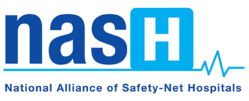The National Alliance of Safety-Net Hospitals has submitted extensive comments to the Centers for Medicare & Medicaid Services about its proposed changes in the Medicare outpatient prospective payment system for 2020.
 In its letter to CMS, NASH focuses on four issues:
In its letter to CMS, NASH focuses on four issues:
- CMS’s price transparency proposal
- Reimbursement for 340B-covered prescription drugs
- Medicare site-neutral payment policy
- Proposed updates of the inpatient-only list of medical procedures
Today this blog features NASH’s comments about reimbursement for 340B-covered prescription drugs. Yesterday we presented NASH’s views on CNN’s price transparency proposal; on Friday we present NASH’s views on Medicare site-neutral payment policy; and on Monday we present NASH’s perspective on CMS’s proposal to permit Medicare to pay for certain medical services on an outpatient basis rather than limiting them to being performed only on patients admitted to a hospital.
See the complete NASH letter to CMS here.
Reimbursement for 340B-Covered Prescription Drugs
The 340B prescription drug discount program helps improve access to high-cost prescription drugs for low-income patients and helps put additional resources into the hands of qualified providers so those providers can do more for such patients: provide more care that their patients might otherwise not be able to afford, offer more services that might otherwise by unavailable to such patients, and do more outreach into communities consisting primarily of low-income residents. Only providers that care for especially large numbers of low-income patients qualify to participate in the 340B program.
In this year’s proposed rule, CMS calls for reimbursing 340B-eligible providers at average sale price less 22.5 percent for 340B-covered prescription drugs. NASH strongly opposes this proposal.
For the past two years CMS also has reimbursed 340B-eligible providers at average sale price less 22.5 percent for 340B-covered prescription drugs, a break from past policy, which reimbursed eligible providers at average sale price plus six percent. This policy change was implemented even though Congress, which created the program, did not direct CMS to reduce payments to 340B providers that serve especially large numbers of low-income patients just to save money and certainly did not direct CMS to introduce new policies that seek to reduce the federal government’s commitment to serving low-income Americans.
Shortly after implementation of the reimbursement reduction that took effect in calendar year 2018, various stakeholders sued CMS over the payment cut and the courts agreed with the stakeholders and rejected the cut. Despite the court’s ruling, CMS did not restore payments to average sale price plus six percent but continued to pay average sale price less 22.5 percent even though the court rejected this payment.
Despite the court’s rejection, CMS proposed the same payment cut for calendar year 2019: average sale price minus 22.5 percent. The stakeholders again sued and the courts again sided with stakeholders and rejected the payment cut. Despite this, CMS again did not restore payments to average sale price plus six percent but continues to pay average sale price less 22.5 percent even though the court had now twice rejected this payment.
 In light of these continued rejections by the courts, NASH encourages CMS to restore 340B payments to their previous level of average sale price plus six percent. The courts have spoken and it is time to respect their verdict.
In light of these continued rejections by the courts, NASH encourages CMS to restore 340B payments to their previous level of average sale price plus six percent. The courts have spoken and it is time to respect their verdict.
This leaves the question of how to reimburse providers for the revenue they lost when CMS continued to make essentially illegal underpayments for two full years, refusing to adjust its payments in the face of its losses in court – a question posed in the proposed regulation. NASH believes the best way, the only way, to repair the damage done to safety-net providers by two years of underpayments is to restore those payments retroactively through a one-time, lump-sum payment that compensates them for every underpaid claim, every under-reimbursed prescription drug during the two-year period during which CMS continued to pay eligible providers average sale price less 22.5 percent despite not one but two court rulings that it must not do so. These lump-sum payments, NASH believes, should be made in their entirety to all affected hospitals by the end of calendar year 2020. To do this, NASH urges CMS to identify the amount of individual hospitals’ underpayments based on data hospitals have already submitted rather than requiring additional action by the injured parties.
As explained by the web site of the Health Resources and Services Administration, which operates the 340B program,
The 340B Program enables covered entities to stretch scarce Federal resources as far as possible, reaching more eligible patients and providing more comprehensive services.
Federal policy should enhance this program and help it achieve its objectives, not make it harder for low-income patients and the providers that serve them. NASH urges CMS to heed the federal government’s own rationale for the program and restore 340B payments to their previous level
See the complete NASH letter to CMS here.
Tomorrow: NASH addresses CMS’s proposed changes in site-neutral payment policy

